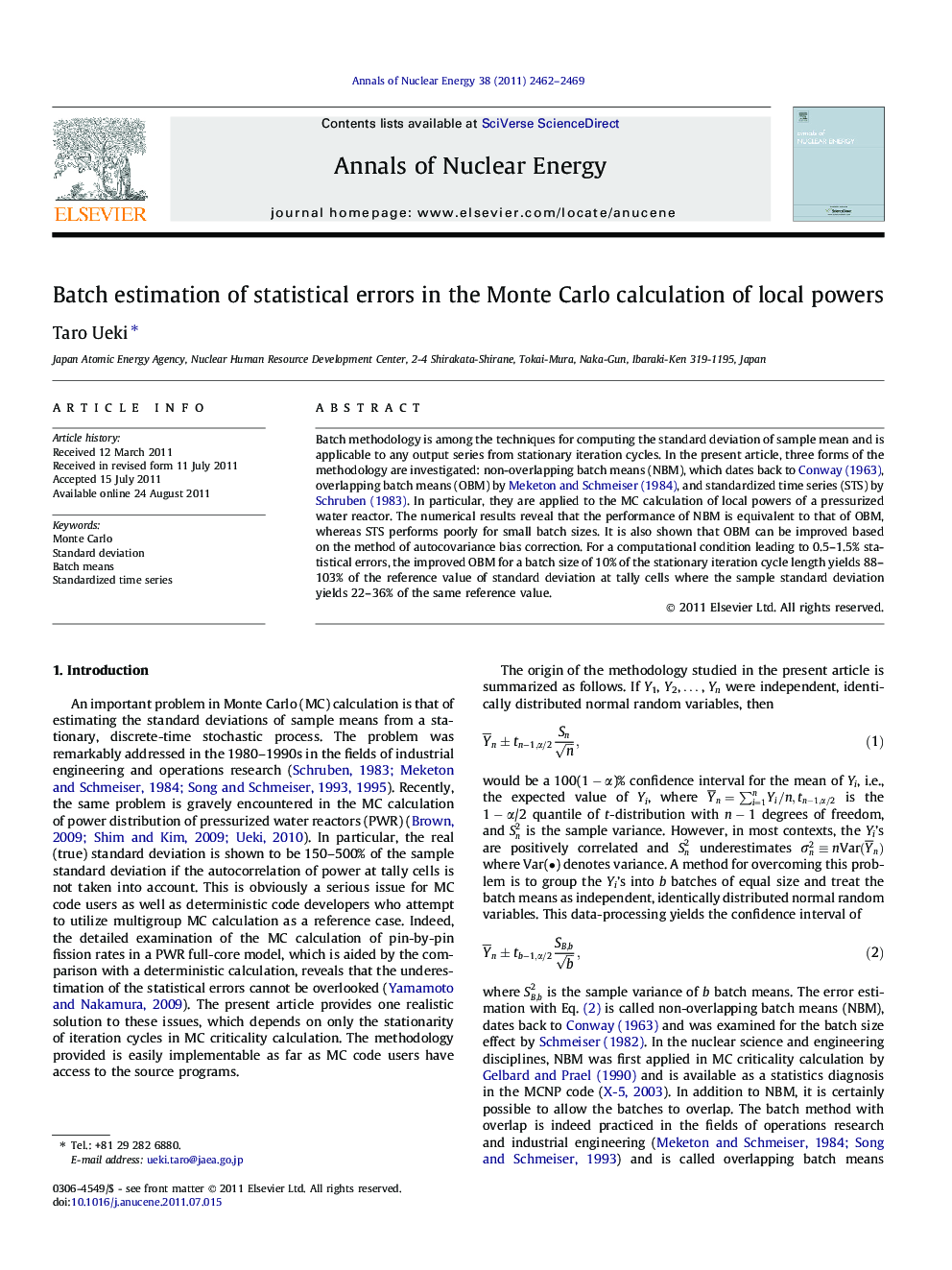| Article ID | Journal | Published Year | Pages | File Type |
|---|---|---|---|---|
| 1729177 | Annals of Nuclear Energy | 2011 | 8 Pages |
Batch methodology is among the techniques for computing the standard deviation of sample mean and is applicable to any output series from stationary iteration cycles. In the present article, three forms of the methodology are investigated: non-overlapping batch means (NBM), which dates back to Conway (1963), overlapping batch means (OBM) by Meketon and Schmeiser (1984), and standardized time series (STS) by Schruben (1983). In particular, they are applied to the MC calculation of local powers of a pressurized water reactor. The numerical results reveal that the performance of NBM is equivalent to that of OBM, whereas STS performs poorly for small batch sizes. It is also shown that OBM can be improved based on the method of autocovariance bias correction. For a computational condition leading to 0.5–1.5% statistical errors, the improved OBM for a batch size of 10% of the stationary iteration cycle length yields 88–103% of the reference value of standard deviation at tally cells where the sample standard deviation yields 22–36% of the same reference value.
► Batch methodology performs well on the practical grounds. ► The sample variance without autocorrelation terms is utterly unacceptable. ► Non-overlapping and overlapping batch means perform better than standardized time series. ► Overlapping batch means can be improved based on autocovariance bias correction without the cost of instability.
